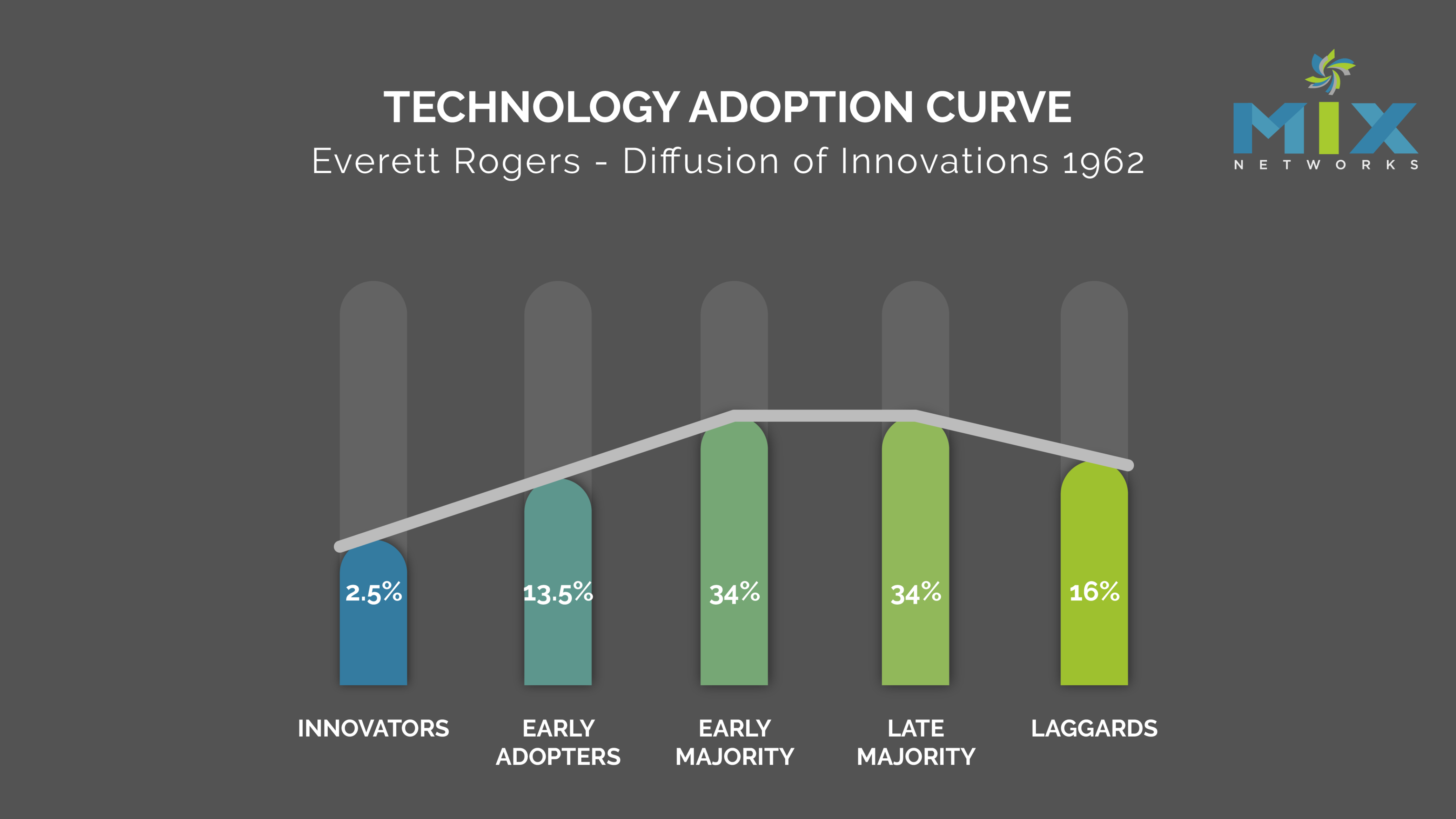We have all been living through a once in a lifetime event. Lives have been completely altered, businesses disrupted, gatherings restricted. The way we live, work, learn, communicate, and interact with family and friends have all been significantly impacted. Some would even say that the business of communications will never be the same.
The beauty of human nature, however, is our problem-solving capabilities. Families are actually growing closer, even if they are physically distant. Businesses are building strong relationships with customers without the traditional business lunch or happy hour. Retail stores that rely on the physical interactions among consumers have moved to on-line shipping only. Restaurants have pivoted and sit-down locations have built strategies to offer to-go menus.
All of this would not have been possible if it weren’t for the human ingenuity that built the communications technology that we all now find ourselves completely reliant on.
The Technology Adoption Curve
Unified communications are not new. You’ve probably seen us, and many others, write on the many benefits of unified communications and how it can revolutionize all businesses. The term “unified communications” was first uttered 30 years ago when voice communications first began to combine with text messaging. The definition of unified communications has changed throughout the years but is now generally accepted to be the combination of voice, video, text, mobile and email communications.
But the acceptance of unified communications has been surprisingly slow and the question is why? It is not like the option has not been at our fingertips for years with the technology innovators within an organization singing the praises of the technologies innovations and added efficiency.
The problem is that as much as the option is presented to us, we simply do not want to change. We like our old school desk phone and email communications. They are familiar. We know how they work and we don’t risk the embarrassment of getting onto a call with clients or coworkers and being overwhelmed and confused by this new-fangled collaborations system.
Typically, we have the luxury of letting the technology adoption curve run its course. But these unprecedented times have significantly disrupted not only where we work, but the very path for HOW we work and when we adopt new technology.
Technology Brings Us Together
Happy hours with family, friends, and colleagues are still occurring. But instead of meeting at a favorite hangout, video conferencing tools connect us all where we continue to build relationships. Oddly enough, families have become even closer than before with the removal of the time and travel barrier. 5 minutes here, or there, or longer can be coordinated in minutes and the miles are closed through our screens.
Technology is not meant to replace human connections. But in times where human connections are unable to be in places where we are personally present and in the same room, technology bridges the gap and offers a more personable experience. Thanks to unified communications and video collaborations, we can continue to work and build relationships with co-workers and customers from the comfort and safety of our own home. And the power of those connections, we think, will become the new normal moving forward as we move past the current disruption in our lives. Learning new technology will no longer be a choice we can make, but a choice we have to make. The business of communications will forever change how, and even where, we work.
Read more:









